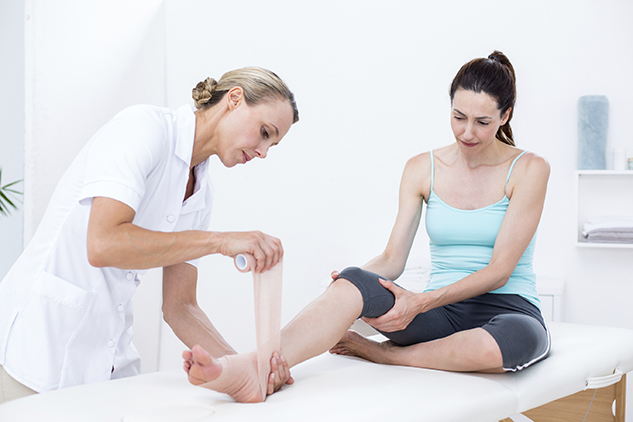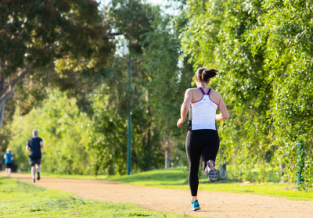Steps For Avoiding Foot Pain
Published on
09 Mar 2016


Written by
Emma Martel (Lee)
Consultant Physiotherapist
Call us on: (03) 9975 4133
For many athletes, foot pain is a real Achilles heel. There are a wide range of issues that can arise in the foot, heel and ankle areas, and many of them can be debilitating - not just for sport, but for simple day-to-day activities. You need to avoid these issues.
Regardless of your sport, chances are you’ll be using and relying on your feet, whether for speed, balance, power, agility, or even just standing up. With Terri Mcleod’s recent post about preparing for long distance trail walking, and the Oxfam Trailwalker event coming up in just a couple of months, now’s the perfect time to refresh your knowledge of common conditions and causes of foot pain.
Hammer Toe:
Hammer toe is a condition that usually affects the proximal interphalangeal joint (the middle ‘knuckle’) of the second, third or fourth toe. In cases of hammer toe, the digit is contracted and bent at the middle joint, so that it faces downwards and resembles a hammer.
It can be caused by years of compensation from the intrinsic (smaller) foot muscles due to strength imbalances, and in some cases through hereditary genetics. Initially, contracted toes will be flexible and respond to stretching exercises, although they can stiffen and become fixed over time.
Preventive measures and potential treatment:
- Plantar flexions: By extending the toes both upwards and downwards, you can generate increased flexibility in your extensor tendons and help prevent excessive tightness. To stretch your extensor tendons, a physio will hold your foot with both hands and gently flex your toes downwards towards the sole of your foot.
- Appropriate footwear: It might sound obvious, but training and running in appropriate footwear is essential. Shoes that are too small, too narrow or unsupportive will contribute to muscular issues, which can contribute to a wide range of issues with the foot.
- Consultation: If you feel you may be suffering from hammer toe, or any other kind of foot pain, consult a physio for specific diagnosis, preventative training and/or treatment.
Plantar Fasciitis:
The plantar fascia is the ligament that connects your heel to your toes. The role of this flat band of tissue is to support the arch of your foot. Any strain or irritation to the plantar fascia will cause swelling, resulting in pain or stiffness in the bottom of your foot and heel when you stand or walk.
This general and extremely common condition, involving swelling and irritation of the plantar fascia, is referred to as plantar fasciitis. It can be caused by excessive time spent standing up, overuse, excessive strain on the ligament, tight Achilles tendons, or other foot conditions, such as high arches or flat feet.
Preventive measures and potential treatment:
- Resistance band calf stretching: Sit on the floor in an L shape (i.e. with your back straight up, and your legs stretched out – heels touching the ground with toes pointed to the sky). Place a resistance band (or tightly wrapped towel) around your foot and stretch it up to your waist, creating tension in the band. Pull the band so that it brings your toes back to point towards your head until you feel a stretch in the back of your calf, Achilles tendon or planta fascia.
- Appropriate footwear: Again, it sounds obvious, but a supportive and well-fitting shoe can play a significant role in the prevention of damage to, or issues with, the plantar fascia. Overuse can have significant impact on the functionality of this ligament, so the more comfortable and stable your arch, the better off you are.
- Consultation: Plantar fasciitis has a good rate of response to treatment, and the earlier you can identify and begin to mitigate the symptoms, the quicker and more effective your recovery. Around 90% of people improve significantly after the first 2 months of physiotherapy. If you’re experiencing pain in your heel or the bottom of your foot when standing, give us a call today.
Sesamoiditis:
Sesamoids are small, independent bones that develop within tendons, specifically where they pass over angular structures. They most often occur in the hands and feet, although the kneecap is also categorised as a sesamoid. Sesamoids provide a smooth surface for tendons to slide over, which increases the ability of a tendon to transmit power and muscle forces. The sesamoids in your feet also assist with weight bearing.
Like any others, the tendons surrounding sesamoids can become irritated and inflamed through overuse or excessive weight bearing, which will create pain and swelling. This condition is a variety of tendonitis, known specifically as sesamoiditis.
Preventive measures:
- Technique assessment: Possible causes of sesamoiditis include overpronation, which can be corrected using insoles and padding, or with modification of technique in certain sports. A physiotherapist will be able to analyse your specific biomechanics and any issues involved with certain movements, and help to develop a detailed corrective/preventative plan.
- Appropriate footwear: We can’t stress this enough – when it comes to avoiding foot pain, it’s one of the easiest ways to ensure your heels won’t need any healing. Keep your feet well supported and suitably comfortable whenever exercising, and update your shoes when they start to deteriorate through overuse.
***
They’re just a couple of common causes of foot pain for runners and athletes. Our top tips for avoiding them? Always exercise in suitable footwear. Engage in prehab and preventive measures. And, if you’re experiencing any of these issues, any discomfort in your heel, ankle or general foot, or you’re considering training for a hike or trail walking event, book an appointment with one of our friendly team members. We’re your first step to success in managing any kind of foot pain.
About the Author
Emma Martel (Lee) — Consultant Physiotherapist
Emma values the importance of listening to her patients to fully understand their symptoms and treatment goals. Through skilled biomechanical analysis of the whole body, her objective lies not only in treating symptoms but identifying the true origin of the problem and working with her patients to prevent future episodes of pain and injury.


